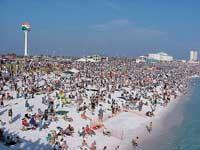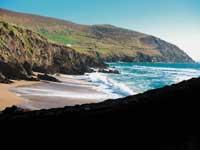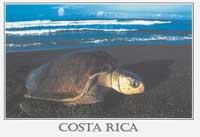Natural beaches of Adio

The tropical beaches are the paradigm of paradise for western tourists. The Caribbean, the islands of Seychelle or Polynesia are places where people look for white sandy beaches. Man wants to find white sand, windswept palm trees, greenish transparent waters and starfish. And if it is an ideal place to surf or dive, better. Yes, no sharks, please.
Sunbathing, surfing… Few consider the beach as an ecosystem to protect, and those who consider it, in no case would prohibit the man from going to the beach. Less bad than the climate is not temperate worldwide.
In different places sea dogs, sea elephants, crabs or turtles accumulate at a certain time of year in search of a hidden place to reproduce. But these types of beaches are becoming increasingly scarce and if governments do not protect them, we will soon transform them and many species will disappear.
Sand huts

It is true that the man is also neighbor to the beaches, at least since the Neolithic. In fact, different cultures have developed on the beaches, not only in the surroundings of the beaches, like the Basques, but on the beaches themselves. For example, the inhabitants of the atolls of Polynesia, in the Pacific, or of the islands of Frisia, in Europe, learned to live in floating houses of sand, feeding only the resources offered by the beach.
But this historical situation was not very suitable for the environment, as these populations grew. As the resources of an island were exhausted, the inhabitants of the beaches began to go out to the sea and look for another.
However, the decline in ecosystems dates back to the 19th century. It has accelerated especially since the twentieth century. And XX. The abuse of the twentieth century makes no retreat. The ecological damage caused by the inhabitants of the beaches has been reduced.

The resources used by these peoples over the years are scarce today; large human populations have eliminated numerous molluscs and destroyed the marine birds the natural environment they need to build their nest, among others. And these are just two examples: if we started writing about fish, algae and invertebrates, the unfortunate state of the beaches would provide enough material to form a book.
Mild weather
Human influence has been uneven on all beaches. In general, the more temperate the weather and the sea, the less force the tide has and the easier it is to reach them, the more damage the beaches have suffered. Considering the different cultures of the place, the list could include many other factors.

The beaches of the Basque Country, for example, meet many of these conditions, making them ideal for tourism development. In fact, there is a great tourist tradition on the beaches of the Basque coast. They have been exploited for centuries. And that means that the human being has cut the natural evolution of the beaches for some time, displacing the sand from one place to another, drying lagoons, eliminating species of the beaches, etc.
This influence is evident, for example, in San Sebastian, where what was once a tombolo is today the center of the city and the famous beach of La Concha (and many others) is human work.
Natural tourism
However, the exploitation of several beaches in the world is based on the reverse idea of using beaches as advertising that man has not left trace. In some cases, they also ‘sell’ the natural phenomena that occur on these beaches or in their surroundings.

For example, in Costa Rica tourists are offered a visit to the beaches where sea turtles lay eggs. There, for several nights, turtles roam and lay thousands of eggs in holes made in the sand. While this happens, tourists move around without obstacles, photograph and touch turtles. In short, the 'natural' beach has become a consumer product.
Costa Rica's is not the only example. The beach that reproduces the sea elephants of the peninsula of Valdés, in Argentina, is also visible to tourists, since in the French campas the highest dune in Europe has been enabled for your visit and there are hundreds of other examples.
In short, the human being wants to leave the mark, which is evident on the beaches. Natural beaches, supposedly, also have a human footprint, somehow. And there are few options to modify it.
We have to accept it. Natural beaches of Adio.





